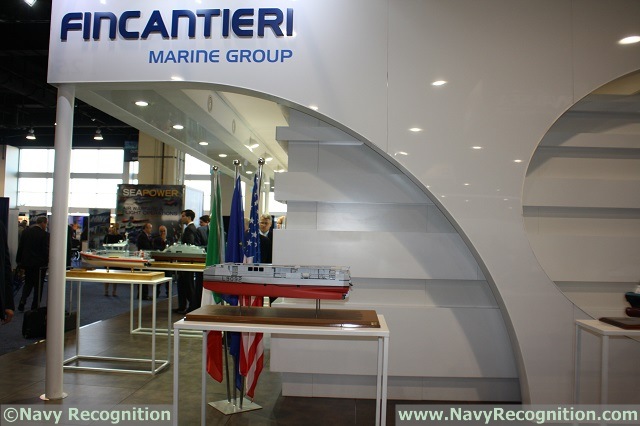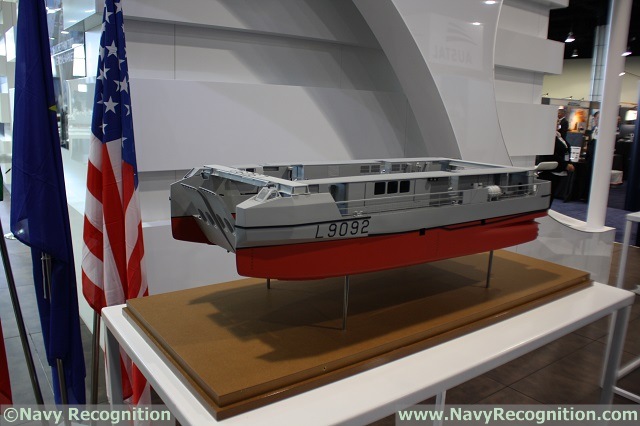| |
| a |
Sea-Air-Space
2015 - CNIM, Fincantieri Marine Group |
CNIM is teaming with Fincantieri Marine Group to propose its L-CAT®
landing craft to the US Military |
During the Navy League's Sea Air Space 2015 exposition currently taking
place near Washington DC in the United States, Navy Recognition
learned that French company CNIM is in the final stages of development
for a partnership with domestic company Fincantieri Marine Group (FMG)
to propose a variant of the proven L-CAT®
Landing Catamaran sea to shore connector to the US Military. |
 L-CAT®
model on Fincantieri Marine Group Booth at Sea Air Space 2015 L-CAT®
model on Fincantieri Marine Group Booth at Sea Air Space 2015 |
|||
CNIM
and FMG will answer the US Army request for proposal (RFP) for the Maneuver
Support Vessel Light, MSV(L), program intended to replace the LCM-8 "Mike"
landing craft. As part of their agreement, FMG will act as prime contractor
and CNIM will be the design agent and provider of some specific equipment. US based FMG is already working with the US Military and Coast Guard through Marinette Marine, which currently builds the Freedom class littoral combat ship for the US Navy with Lockheed Martin. The craft proposed to the US Army will be an enhanced and simplified variant of the L-CAT® already in service within the French Navy. In US Army service the L-CAT® derivative would be used for shore to shore and intra-island operations. The US Army requirement for a capable craft to replace the aging LCM-8 is a direct consequence of the US Military shift to the Asia Pacific. |
|||
|
CNIM
Video |
|||
The
L-CAT® offers an innovative variable draft system: » In Catamaran mode, the L-CAT® acts as a coastal catamaran. The platform is raised. The twin hull catamaran supports the mobile platform and the craft can reach 30 knots (light ship) and carry up to 100 metric tons. » In Landing Vessel mode, the L-CAT® acts as a landing craft. The platform is lowered into the water and supports the catamaran. The draft is reduced. Thanks to this unique technology, the L-CAT® has good beaching capacity in shallow water up to a gradient of 1:50. The French Navy operates four landing catamarans (designated EDA-R in the French Navy) which act as sea to shore connectors for the three Mistral class LHDs. A couple of weeks ago, French navy vessel BPC Dixmude (a Mistral class LHD) used its EDA-R to evacuate and transfer European citizens from a port in Yemen to the safety of the LHD. |
|||
 L-CAT®
model on Fincantieri Marine Group Booth at Sea Air Space 2015 L-CAT®
model on Fincantieri Marine Group Booth at Sea Air Space 2015 |
|||
CNIM's
landing catamaran has been proven and tested multiple times with the US
Navy's LHDs and LPDs amphibious vessels. During Bold Alligator 2012, an
international joint naval amphibious exercise, the US Navy and Marine
Corps could test the L-CAT® as a sea to shore connector in real conditions
and the feedback was very positive according to the French Navy. The MSV(L) based on the L-CAT® design is a low risk, affordable and off the shelf solution that meets the US Army “RAM” requirement: - Reliability - Availability - Maintainability In addition, Navy Recognition learned during Sea Air Space 2015 that both the US Navy and US Marine Corps are also looking for a new generation landing craft to replace their existing LCUs. The L-CAT® would be the ideal solution to answer this future need. |
|||










